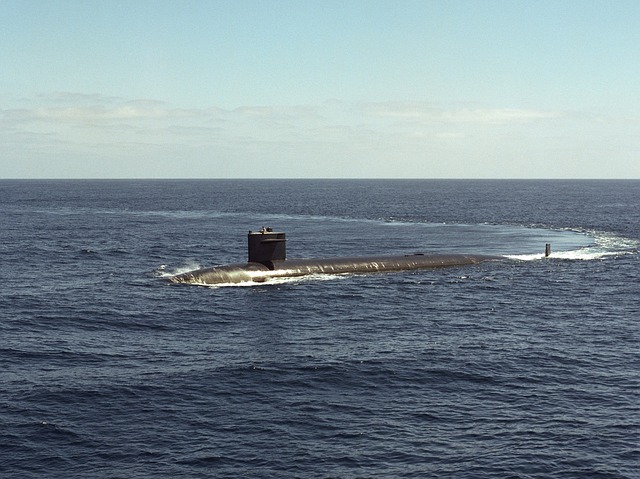Pharaoh’s curse: Did Egypt’s plan to transfer mummies jinx the ship stuck in the Suez Canal?
04/01/2021 / By Virgilio Marin

The curse of the pharaohs is being linked to a recent string of accidents in Egypt, including the obstruction of the Suez Canal by the container ship Ever Given on March 23. A plan to move royal mummies to another museum in April supposedly unleashed the curse that caused the ship’s grounding, as well as the fatal train collision in an Egyptian province and the collapse of a structure in the country’s capital.
How the pharaoh’s curse emerged
Ever Given, a 1,300-foot-long cargo ship carrying thousands of shipping containers, ran aground near the Egyptian city of Suez around 3.7 miles north of the Suez Canal’s southern entrance. It was stuck sideways in the waterway for nearly a week until authorities were able to set it free on Monday, March 29.
Until now, it remains unclear how the ship has gotten stranded in one of the busiest maritime arteries in the world. There is speculation that a plan to transfer 22 mummies may have jinxed the ship. Officials will move the royal remains from the Egyptian Museum in Downtown Cairo to the National Museum of Egyptian Civilization in old Cairo on April 3.
The mummies include the remains of King Ramses II, the third pharaoh of the 19th Dynasty of Egypt who ruled from 1279 to 1213 B.C., as well as his father Seti I and the pharaohs Seqenenre Tao and Thutmose III.
According to an Egyptian legend, anyone who disturbs the mummies of ancient Egypt will be cursed. The legend comes from an inscription allegedly carved on a royal tomb: “Cursed be those that disturb the rest of pharaoh. They that shall break the seal of this tomb shall meet death by a disease which no doctor can diagnose.” (Related: Archaeologists uncover a dark chapter in Ancient Egyptian history: 60 Mummies found with evidence of GRUESOME deaths.)
The curse is commonly attributed to King Tutankhamun, also known as King Tut, who ruled from 1333 to 1323 B.C. In 1922, British archaeologist Howard Carter discovered King Tut’s largely intact tomb during an expedition funded by English aristocrat George Herbert, the 5th Earl of Carnarvon. Herbert entered the tomb multiple times and occasionally crawled the floor. A year after the excavation, he had blood poisoning due to an infected mosquito bite and developed pneumonia along with other complications, which ultimately caused his death.
Herbert’s demise fueled speculation that an ancient spell, called the “curse of King Tut,” protected the pharaoh’s tomb. Sir Arthur Conan Doyle, the creator of Sherlock Homes, further piqued people’s imagination when he suggested that “elementals” created by King Tut’s priests to guard his tomb were responsible for Herbert’s passing.
Experts debunk link between pharaoh’s curse and accidents
The plan to move the dead also coincided with other accidents in Egypt. Last Friday, March 26, two trains collided in the province of Sohag some 270 miles from Cairo. The deadly crash derailed two carriages and killed at least 19 people. A day later, a 10-story building in the district of Gesr el-Suez in Cairo toppled to the ground, claiming at least 18 lives. Later that day, a fire broke out at shops in the city of Zagazig and another fire erupted inside Al Azhar tunnel.
But Egyptologist Zahi Hawass stated in a televised interview that the pharaoh’s curse was not real and had nothing to do with the accidents. Egyptian historian Bassam el-Shammaa also disputed claims of a mummy’s curse, noting that the ominous inscriptions on the walls of historic temples were just figments of ancient Egyptians’ imagination. (Related: Ancient Egyptian tomb reveals GRUESOME murals of cows being slaughtered.)
El-Shammaa also debunked speculation that the curse caused the death of archaeologists who excavated Egyptian tombs. He explained that some mummies were teemed with toxic molds and some graves were littered with bat droppings, which carried fungi that can cause lung disease. He also noted that coffins normally leak chemicals that can cause pneumonia and irritate the eyes and nose.
Experts had also ruled out any connection between Herbert’s death and King Tut’s tomb. Herbert was immunocompromised for years due to a pre-existing condition and could have easily fallen ill from the molds.
As for the cause of Egypt’s recent misfortunes, mundane reasons such as poor infrastructure are likely to blame. The country’s rail system, for example, is quite accident-prone due to mismanagement. In 2017 alone, nearly 1,800 accidents took place on Egyptian railways.
Egyptian authorities said that Ever Given ran aground due to technical or human reasons. Meanwhile, the ship’s owners determined that high winds from a sandstorm pushed the ship sideways.
Visit WeirdScienceNews.com to learn more about weird phenomena and the real science behind them.
Sources include:
Tagged Under: Ancient Egypt, ancient history, debunked, disasters, Egypt, Egyptian tomb, history, mummies, mummy's curse, Paranormal, pharaoh's curse, pharaohs, real history, suez canal, train accidents, weird science
RECENT NEWS & ARTICLES
COPYRIGHT © 2017 UNEXPLAINED.NEWS
All content posted on this site is protected under Free Speech. Unexplained.news is not responsible for content written by contributing authors. The information on this site is provided for educational and entertainment purposes only. It is not intended as a substitute for professional advice of any kind. Unexplained.news assumes no responsibility for the use or misuse of this material. All trademarks, registered trademarks and service marks mentioned on this site are the property of their respective owners.





















